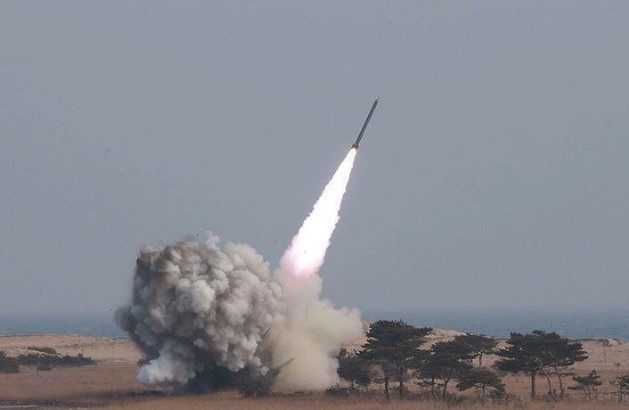Yemen’s Houthi armed group has once again claimed responsibility for launching a hypersonic missile and two drones targeting Israel. According to the Houthis, they fired a “Palestine 2 hypersonic ballistic missile with multiple warheads” towards the Tel Aviv area. Alongside the missile, two drones were reportedly sent towards Eilat in southern Israel overnight.
Houthis Announce Hypersonic Missile and Drone Attacks
The Houthis described these attacks as a direct response to what they called “crimes of genocide” and a “dangerous escalation” by Israel against the people of Gaza. They added that the strikes were part of their ongoing religious, moral, and humanitarian duties. The group stated they would continue such operations until they consider the aggression against Gaza to have stopped.
This statement comes amid rising tensions in the region, showing the Houthis’ ability to reach locations far from Yemen. Hypersonic missiles are particularly notable for their speed and maneuverability, making them much harder to intercept compared to traditional missiles.
Yemen’s Houthis announce Palestine-2 missile fired at Tel Aviv in unprecedented escalation
The Houthis’ use of advanced weaponry, including drones, highlights their growing military capabilities. These attacks are seen as part of a broader pattern where armed groups in the region increasingly combine missile and drone technology to target distant areas.
Israeli Military Reports Interception of Houthi Strike
Israel’s military confirmed that the hypersonic missile fired by the Houthis was successfully intercepted. No injuries or damage were reported. As of now, there have been no official updates regarding the status or impact of the two drones sent towards southern Israel.
The interception underscores the effectiveness of Israel’s missile defense systems. These systems are designed to detect, track, and destroy incoming threats from various directions, therefore protecting populated areas, critical infrastructure, and civilian life.
The Israeli military routinely monitors threats from across the region, including potential missile and drone attacks. As a result, their readiness and rapid response highlight the importance of maintaining active and functional air defense networks. The interception of the Houthi missile demonstrates Israel’s ongoing capability to defend against long-range attacks.
Treasury Targets 3 Ships Funding Iran-Backed Houthis in Red Sea
The Houthis’ announcement of the strike also drew attention to the growing sophistication of armed groups outside traditional state militaries. In other words, their ability to attempt attacks with advanced missiles and drones poses challenges for regional security and defense planning. Moreover, this development signals the evolving nature of threats that require constant monitoring and strategic preparedness.
Meanwhile, the focus on both missile and drone technology highlights the Houthis’ expanding capabilities. Consequently, countries in the region must remain vigilant and ensure that defensive measures are continuously updated. Above all, these incidents emphasize the importance of rapid response systems to protect civilian populations.
Houthis’ Military Capabilities and Regional Impact
The latest strike by the Houthis reflects the growing military capabilities of armed groups in Yemen. Hypersonic missiles are faster, travel longer distances, and are designed to evade conventional defense systems. Their use by the Houthis indicates an evolution in military technology deployment by non-state actors.
In addition to missiles, drone technology continues to play an increasing role in conflicts worldwide. The use of drones in this strike highlights how the Houthis combine different types of modern weaponry to target distant locations effectively.
The attacks are directly linked to the ongoing tensions related to Gaza. The Houthis have stated that their operations are a form of retaliation, framing their strikes as part of their response to actions against civilians in Gaza.
Fire from the ashes: Houthis unleash long-range missile on Israel after Sanaa airstrike kills 35
While no casualties or damages have been reported, the incident highlights the volatile nature of the Middle East and the risks posed by long-range missile and drone technology. It also emphasizes the importance of missile defense readiness in responding to emerging threats and ensuring civilian safety.
The repeated involvement of the Houthis in such strikes demonstrates how armed groups can increasingly influence regional security dynamics. Their expanding technological capabilities underline the potential challenges that countries in the region may face in the future.

